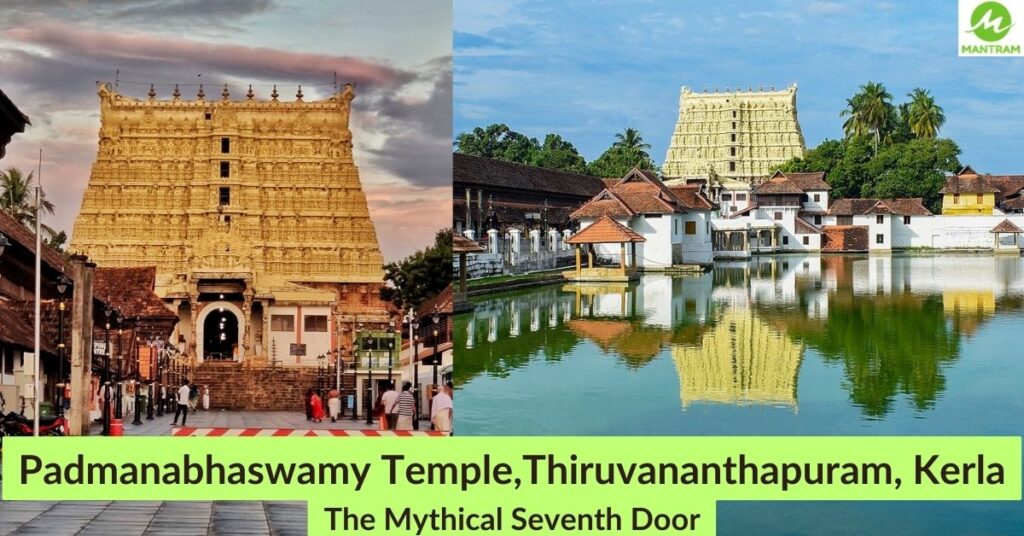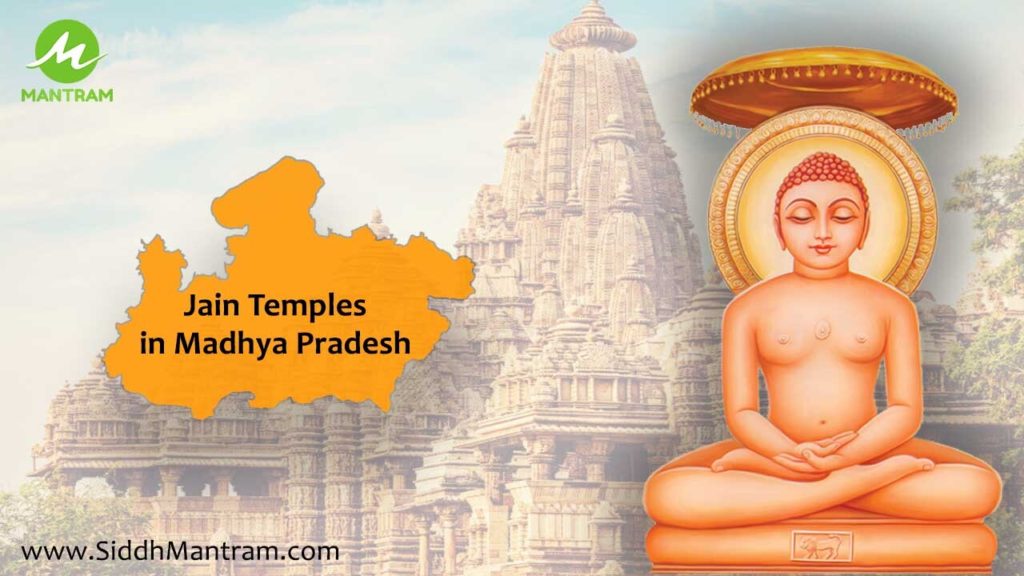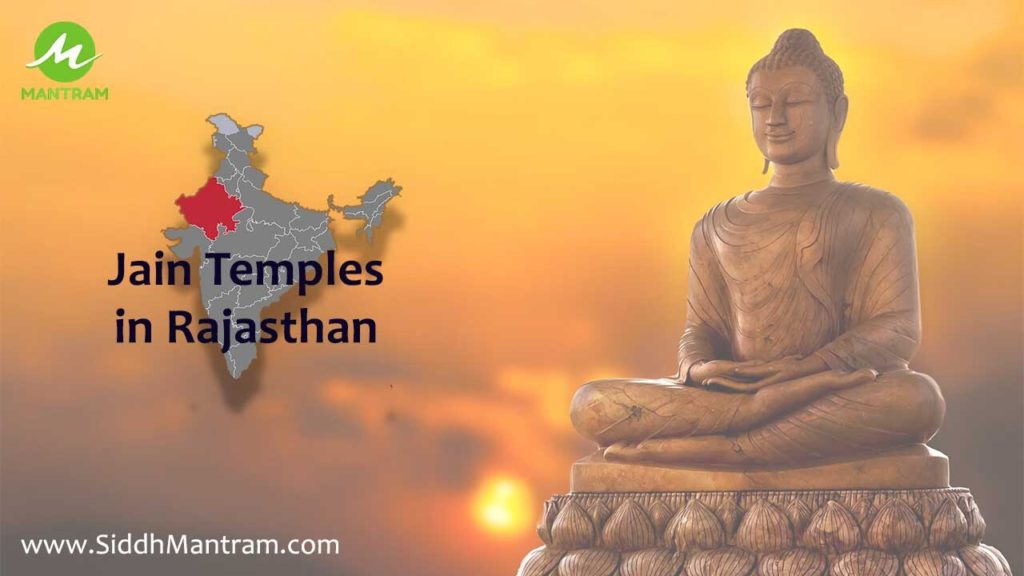Introduction of Padmanabhaswamy Temple
Welcome to the mystical world of Padmanabhaswamy Temple, a revered place of worship located in the heart of Thiruvananthapuram, Kerala, India. This ancient temple holds a special place in Hindu mythology and dharma, captivating the hearts of devotees and history enthusiasts alike. With its exquisite architecture and intriguing legends, the temple has become a symbol of spiritual enlightenment and cultural heritage.
Padmanabhaswamy Temple continues to be a revered pilgrimage site, attracting devotees from across the globe. Its historical and mythological significance, along with the treasures discovered in its secret vaults, has elevated its stature to that of a national and international heritage site, symbolizing the profound spiritual heritage of India. The temple’s history is a testament to the enduring power of faith, culture, and tradition in shaping the identity of a nation and its people.
The idol(Murti) of the Padmanabhaswamy Temple
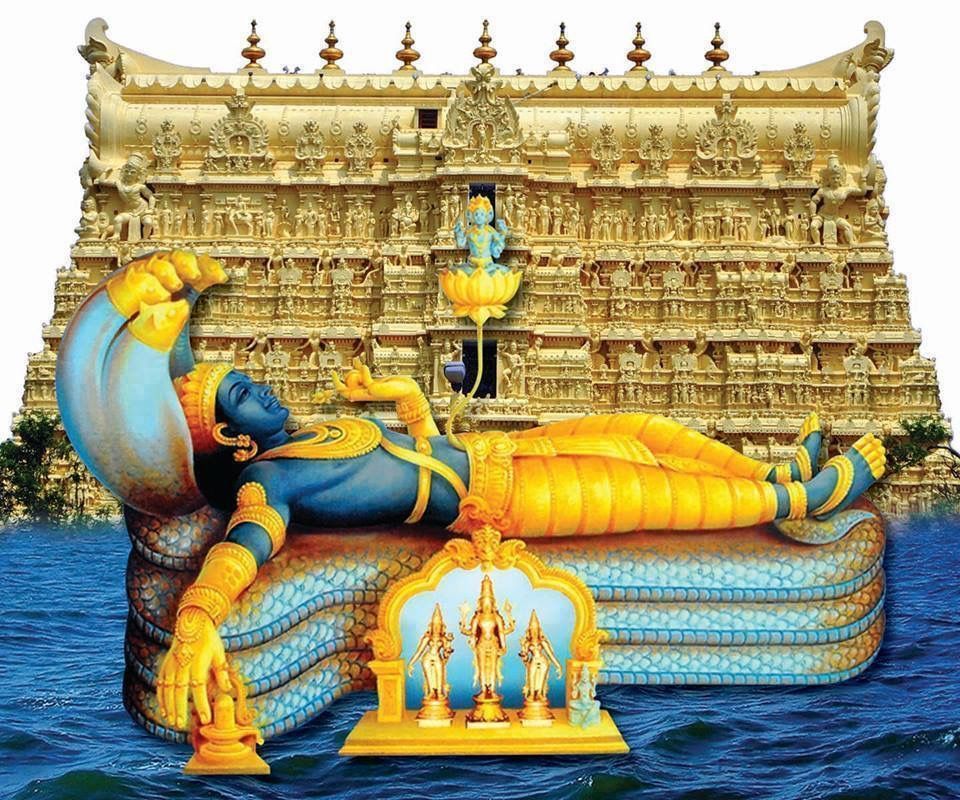
The idol of the Padmanabhaswamy Temple is an awe-inspiring representation of Lord Vishnu in his Anantha Shayana (reclining) form. Carved out of a unique combination of special herbs, minerals, and sacred materials, the idol is a masterful work of art and devotion, captivating the hearts of devotees and visitors alike.
The idol lies on the sacred serpent Anantha, which symbolizes eternity and timelessness. Lord Vishnu is depicted with four hands, each holding divine objects that represent his attributes and cosmic powers. The upper right-hand holds the discus (chakra), symbolizing the preservation of dharma and the cyclical nature of life. The upper left-hand holds the conch shell (shankha), representing the primordial sound of creation. The lower right hand is in the gesture of blessings (abhaya mudra), signifying protection and fearlessness. The lower left-hand holds a lotus flower, symbolizing purity and spiritual enlightenment.
The Lord’s eyes radiate a serene and compassionate expression, bestowing blessings and solace upon his devotees. The idol’s divine aura is accentuated by intricate details, including finely sculpted ornaments, divine symbols, and floral motifs that adorn the deity.
The unique feature of the idol is the presence of a special Ayurvedic concoction called “Katusarkara Yogam,” which is a mixture of rare medicinal herbs and minerals. This mixture has preserved the idol for centuries, making it one of the oldest and best-maintained ancient idols in India.
The idol’s significance lies in its portrayal of Lord Vishnu as the eternal preserver of the universe, reclining on the serpent Anantha amidst the cosmic ocean. Devotees believe that gazing upon the deity bestows divine blessings and spiritual solace.
The idol’s sanctum, known as the Garbhagriha, is considered the holiest area of the temple. It is the focal point of the temple’s spiritual energy, drawing devotees from far and wide to seek the divine darshan (holy sight) of Lord Padmanabhaswamy.
Location of Padmanabhaswamy Temple
Padmanabhaswamy Temple graces the East Fort area of Thiruvananthapuram,kerla, surrounded by a serene ambiance that soothes the soul. As you enter, you will be greeted by magnificent gopurams (tall gateways) adorned with intricate carvings, leading you to the divine sanctum where Lord Vishnu rests in his Anantha Shayana (reclining) form.
The Padmanabhaswamy Temple’s “Khajana” and Net Worth
The Padmanabhaswamy Temple’s “Khajana” refers to the vast and extraordinary treasure trove discovered within the temple’s secret vaults during a historic inventory in 2011. The term “Khajana” is a Hindi word meaning “treasury” or “storehouse,” and in the context of the temple, it signifies the abundance of hidden wealth and precious artifacts that have been safeguarded for centuries.
The six basements of the Padmanabha Swamy temple have yielded a remarkable discovery of property worth a staggering Rs 1,32,000 crore. Among the treasures unearthed, a three and a half feet gold idol of Lord Vishnu was found, adorned with precious diamonds and stones. Additionally, an impressive 18 feet long gold chain and an abundance of diamonds and precious stones were also uncovered during the excavation. The findings are a testament to the temple’s rich heritage and the awe-inspiring wealth that lies within its sacred walls.
During that inventory, it was reported that Vaults A and B contained a staggering amount of gold, jewelry, and precious artifacts, leading to an estimation of the temple’s wealth in billions of dollars. Vaults C, D, E, and F were also known to hold valuable items, but specific details regarding the exact quantities and net worth were not disclosed. whereas vault b is unopened, because of many reasons.
It’s important to note that the temple’s wealth is considered priceless, and the total value remains a subject of speculation and scholarly debate. As a religious institution, the management and preservation of the temple’s assets are subject to legal and cultural considerations.
For the most accurate and up-to-date information on the Padmanabhaswamy Temple’s treasures, it is recommended to refer to official sources and reports issued by the authorities involved in the temple’s governance and management.
Unveiling the Mystery of the Seventh Door (Rahasya)(Vault b)
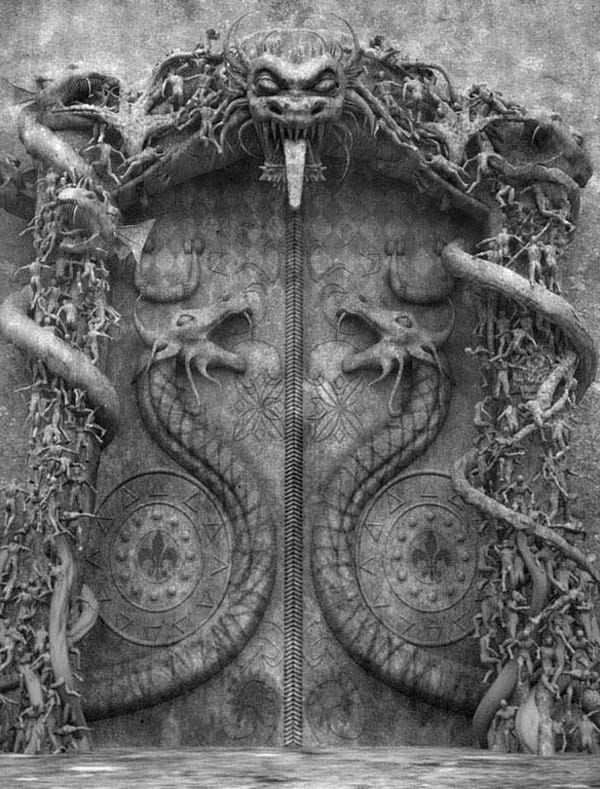
The temple’s allure lies not only in its splendid architecture but also in its seven secret doors. Among these doors, the Seventh Door stands out, shrouded in mystery and wonder. Ancient texts and local tales narrate fascinating stories about the treasures concealed behind this door. Many believe that the door guards unimaginable riches, ancient artifacts, and precious gems.
Sacred Treasures and Hidden Wonders of Padmanabhaswamy Temple
Behind the Seventh Door, lies a realm of hidden wonders and sacred treasures that have piqued the curiosity of explorers and historians alike. The wealth goes beyond monetary value, reflecting the cultural and historical richness of India’s past.
The Mythical Seventh Door (Satwa Darwaja)of Padmanabhaswamy Temple has long been a subject of fascination and intrigue. This ancient temple, nestled in the vibrant city of Thiruvananthapuram, Kerala, India, is renowned for its spiritual significance and architectural grandeur. Among its many mysteries, the Seventh Door stands out as a symbol of hidden wonders and tales from the annals of time.
According to Hindu mythology, the temple’s origins are shrouded in legend. It is believed that the sage Divakara Muni, guided by divine inspiration, consecrated the temple to honor Lord Vishnu, the preserver and protector of the universe. The sacred abode, adorned with intricate carvings and soaring gopurams, has since become a cherished pilgrimage site.
The temple houses seven secret doors, each leading to a different chamber. Among these doors, the Seventh Door holds the most alluring secrets. Ancient texts and local folklore narrate tales of this door’s significance, speculating on what lies behind it. Many believe that it guards an immense treasure, amassed over centuries, including precious gems, gold, and priceless artifacts.
One of the most captivating tales associated with the Seventh Door(Vault b) revolves around the curse of a serpent. Legend has it that a powerful serpent, named Anantha, once resided within the temple premises. However, after an unfortunate event, the serpent transformed into a stone idol and took refuge within the temple, becoming an eternal guardian.
The Two Serpents of the Mythical Seventh Door of Padmanabhaswamy Temple are an integral part of the temple’s captivating mythology and legends. These serpents, named Anantha and Vasuki, hold profound significance in Hindu mythology and are believed to play a crucial role in safeguarding the treasures concealed behind the Seventh Door.
Anantha, the Divine Serpent:
Anantha, also known as Adi Sesha or Sheshanaga, is a divine serpent mentioned in Hindu scriptures as the bed or couch of Lord Vishnu. In the context of Padmanabhaswamy Temple, Anantha is said to be the guardian of the temple’s sanctum where Lord Vishnu rests in his reclining form. According to mythology, Anantha is an embodiment of time and eternity, coiled in a thousand-hooded serpent form.
The legend goes that Anantha once resided in the temple precincts as a living serpent. However, after an event, possibly related to a curse or divine intervention, Anantha turned into a stone idol and became a permanent guardian of the temple. As per the beliefs, the temple was built around this divine serpent, highlighting its significance in the temple’s architecture and sanctity.
Vasuki, the Serpent of the Seventh Door:
Vasuki is another prominent serpent in Hindu mythology and is often depicted as the king of the Nagas (serpents). In the context of Padmanabhaswamy Temple, Vasuki is associated with the Seventh Door, which is believed to be guarded by this celestial serpent.
Tales and local folklore narrate that Vasuki’s presence at the Seventh Door serves as protection against any intrusion or disturbance of the hidden treasures and riches believed to lie behind it. Vasuki’s role as the guardian symbolizes the divinity and power that safeguard the sacred and mysterious contents of the temple’s vaults.
The serpents, Anantha and Vasuki, intertwine the temple’s spiritual aura with the mythical and mysterious. They represent the eternal nature of time and the cosmic significance associated with Lord Vishnu, making the temple an emblem of divine harmony and protection. The beliefs surrounding these serpents add to the enigma of the Seventh Door and further fuel the fascination and reverence that devotees and visitors have for the illustrious Padmanabhaswamy Temple.
Another tale recounts a mysterious dream experienced by a royal heir. In the dream, Lord Vishnu himself appeared and revealed the existence of a hidden door in the temple. Guided by the divine vision, the prince embarked on a quest to find the Seventh Door, where untold riches and ancient relics were rumored to be safeguarded.
The Seventh Door’s allure extends beyond its mythical tales. In 2011, a historic event occurred when the Supreme Court of India ordered the inspection of the temple’s vaults. What was discovered behind the Seventh Door astounded the world – a vast treasure trove worth billions of dollars. The vaults contained a vast collection of jewels, golden idols, ancient coins, and precious artifacts dating back several centuries.
The unearthing of this wealth sparked debates and controversies over its rightful ownership and management. The temple’s newfound fame led to increased security and preservation measures, ensuring the protection of its cultural and historical legacy.
The Historical Significance of Padmanabhaswamy Temple:
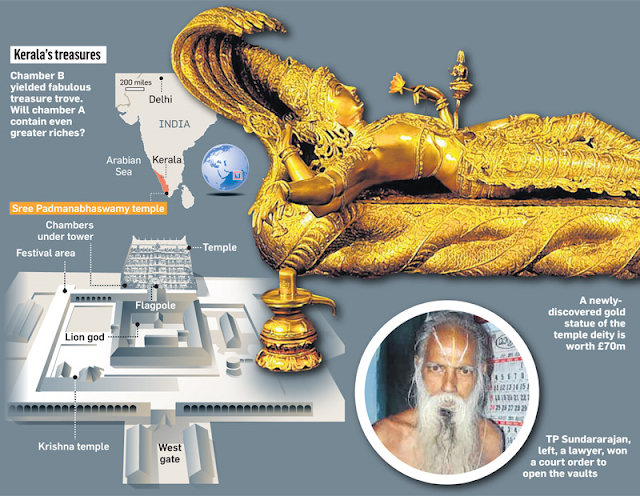
The history of Padmanabhaswamy Temple dates back to ancient times, intertwining legends and historical events with the rich tapestry of Hindu mythology. The temple is believed to have been constructed in the 8th century AD, during the reign of the Chera dynasty in the region of present-day Kerala, India.
Who built the Padmanabhaswamy Temple?
The Padmanabhaswamy Temple was built by the King of Travancore, Anizham Thirunal Marthanda Varma, in 9the th century AD(First Half of 18th Century). The temple’s construction was later expanded and renovated by subsequent rulers and members of the Travancore royal family. The temple is dedicated to Lord Vishnu in his Anantha Shayana (reclining) form and is considered one of the most revered and ancient temples in India. Its architectural splendor and spiritual significance make it a significant pilgrimage site for devotees and a symbol of Kerala’s rich cultural heritage.
According to Hindu mythology, the temple’s foundation can be traced back to a divine revelation. As the story goes, Sage Divakara Muni, an ardent devotee of Lord Vishnu, received a divine vision where the Lord instructed him to build a temple dedicated to his reclining form, known as “Anantha Shayana” or “Padmanabhaswamy.”
Inspired by the divine message, Sage Divakara Muni set out to fulfill the Lord’s command and constructed the sacred temple, where the presiding deity is Lord Vishnu reclining on the serpent Anantha, representing eternity and timelessness.
Over the centuries, the temple came under the patronage and protection of different dynasties that ruled the region. Notably, during the medieval period, the temple was under the governance of the Cholas and later the Travancore kingdom. The Travancore rulers played a significant role in the temple’s development, leading to the transformation of the temple’s architecture and its prominence as a spiritual and cultural landmark.
The Temple’s Architectural Marvel:
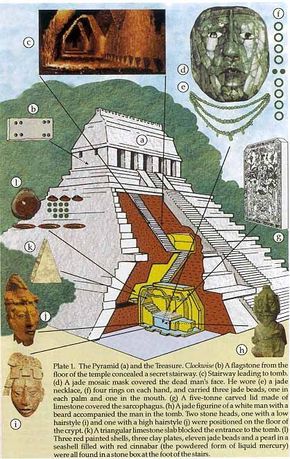
The temple’s architectural style is a beautiful blend of traditional Kerala architecture and Dravidian influences, reflecting the artistic brilliance of ancient artisans. The temple boasts towering gopurams (gateways) adorned with intricate carvings of Hindu deities and mythological scenes. The outer walls showcase detailed sculptures, narrating stories from Hindu epics like the Ramayana and the Mahabharata.
Made of stone and granite, the temple’s sturdiness and grandeur have withstood the test of time, retaining its splendor and significance through various periods of Indian history.
The awe-inspiring architecture of Padmanabhaswamy Temple is a testament to the skilled craftsmanship of yesteryears. The temple’s towering gopurams, delicate carvings depicting mythological scenes, and intricately designed pillars leave visitors mesmerized by the grandeur of ancient Indian artistry.
The architecture of Padmanabhaswamy Temple:
The Padmanabhaswamy Temple is a magnificent example of Dravidian-style architecture infused with traditional Kerala elements. Located in Thiruvananthapuram, Kerala, India, the temple’s construction dates back to the 8th century AD, and it has undergone subsequent renovations and enhancements over the centuries.
- Main Structure:
The temple’s main structure consists of a large rectangular courtyard surrounded by impressive stone walls. The temple’s entrance is marked by towering gopurams (pyramidal gateways) adorned with intricate carvings of Hindu deities, celestial beings, and mythological scenes. The gopurams are a striking feature and a testament to the skilled craftsmanship of ancient artisans. - Sanctum and Garbhagriha:
The central sanctum of the temple houses the main deity, Lord Vishnu, in his Anantha Shayana (reclining) form on the serpent Anantha. The sanctum is accessible through a narrow passage called the “Nataka Sala” or “Dance Hall.” The inner sanctum, known as the Garbhagriha, is the holiest area of the temple where devotees offer their prayers and witness the divine darshan (holy sight) of Lord Vishnu. - Seven Secret Doors:
The Padmanabhaswamy Temple is renowned for its seven secret doors leading to different chambers and vaults. Among these, the most famous is the enigmatic Seventh Door, which has garnered significant attention and controversy.
The Temple’s Importance in Hindu Mythology and Dharma
Devoted to Lord Vishnu in his divine reclining form, the temple holds great spiritual significance in Hindu dharma. Pilgrims flock to the temple to seek blessings and salvation, believing that a glimpse of the Lord bestows eternal bliss. The temple’s rituals and festivals resonate with the essence of Hindu culture, fostering a sense of unity and devotion.
The dress code of Padmanabhaswamy Temple And Darshan Niyam
It is strictly enforced to maintain the temple’s sanctity and uphold traditional religious practices. Devotees and visitors are required to adhere to the following dress code:
- Traditional Attire: Men are expected to wear traditional attire such as dhoti (a cloth wrapped around the waist) or mundu (a similar garment) along with a shirt or kurta. Women are expected to wear saree, traditional Kerala attire, or a long skirt and blouse.
- No Western Attire: Western-style clothing, such as shorts, skirts above the knee, and sleeveless tops, is not permitted inside the temple premises.
- No Tight-Fitting Clothing: Devotees are advised not to wear tight-fitting or revealing clothing as a sign of respect for the temple’s spiritual atmosphere.
- No Leather Items: Carrying leather items, including belts, bags, and wallets, is strictly prohibited within the temple complex.
- No Headgear or Hats: Headgear or hats are not allowed inside the temple premises for both men and women.
- Removal of Footwear: Visitors are required to remove their footwear outside the temple before entering the sacred sanctum.
- Proper Conduct: Devotees are expected to maintain a peaceful and reverential demeanor inside the temple. Loud conversations, photography, and mobile phone usage are discouraged in the main areas of worship.
Darshan Niyam:-
The Padmanabhaswamy Temple follows specific rules and regulations for darshan (worship and viewing of the deity) to maintain its sacredness and spiritual ambiance. These darshan niyam (guidelines) are in place to ensure a smooth and peaceful darshan experience for all devotees. Here are the common darshan niyam observed at the temple:
- Dress Code: Devotees are required to adhere to the traditional dress code. Men should wear dhoti or mundu along with a shirt or kurta. Women should wear saree, traditional Kerala attire, or a long skirt and blouse. Western-style clothing, shorts, skirts above the knee, sleeveless tops, and hats are not allowed inside the temple.
- Footwear: Devotees are required to remove their footwear before entering the temple complex. Shoes and sandals are not allowed beyond the designated areas.
- Proper Conduct: While inside the temple, visitors are expected to maintain a peaceful and reverential demeanor. Talking loudly, using mobile phones, and taking photographs are discouraged in the main areas of worship.
- Time Slots: Darshan timings are fixed and may vary on different days of the week. Devotees are advised to check the temple schedule and plan their visit accordingly.
- Queue System: To ensure an orderly darshan, the temple implements a queue system. Devotees are requested to stand in the designated lines and wait patiently for their turn.
- VIP Darshan: There may be separate arrangements for VIP darshan, but the majority of devotees follow the regular darshan queue.
- Specific Days and Occasions: On certain festival days and auspicious occasions, the temple may witness a higher number of devotees. Special arrangements and additional security measures may be in place during such times.
- Offerings: Devotees may offer prayers, flowers, and other traditional offerings to the deity during darshan. However, certain offerings or rituals may require prior permission from the temple authorities.
- Non-Hindu Visitors: As of my knowledge cutoff date in September 2021, non-Hindu visitors were not allowed to enter the inner sanctum of the temple. However, they could visit the temple premises and outer areas.
Festivals Related to Padmanabhaswamy Temple
The Padmanabhaswamy Temple in Kerala celebrates several important festivals throughout the year, each holding immense significance for devotees and attracting a large number of visitors. Some of the main festivals related to the temple are:
- Alpashy Festival: This festival is celebrated in the Malayalam month of Alpashy (October-November). It marks the beginning of the temple’s festival calendar and is observed with great enthusiasm.
- Panguni Festival: Also known as the Meena Bharani festival, it takes place in the Malayalam month of Panguni (March-April). The highlight of this festival is the grand procession of the temple’s deities on beautifully decorated chariots, attracting a massive gathering of devotees.
- Vinayaka Chaturthi: Celebrated in honor of Lord Ganesha, this festival falls on the fourth day after the new moon in the month of Bhadrapada (August-September). It is marked with special prayers and offerings to Lord Ganesha.
- Navaratri: This nine-day festival, dedicated to the divine feminine energy, is celebrated with devotion and fervor in the temple. The last three days, known as Durga Puja, are particularly significant.
- Janmashtami: Celebrated on the occasion of Lord Krishna’s birth, Janmashtami is observed with traditional rituals and fervent devotion to Lord Krishna.
- Aarattu Festival: This festival marks the conclusion of the Alpashy festival. The idols of the deities are taken in a procession to the Shankumugham Beach, where they are immersed in the sea during the ceremonial Aarattu.
- Vishu: Celebrated on the first day of the Malayalam New Year, Vishu is a time of auspiciousness and new beginnings, and the temple witnesses a large number of devotees seeking blessings for the year ahead.
How to Reach Padmanabhaswamy Temple, Kerala:
By Air:
The nearest airport to Padmanabhaswamy Temple is the Trivandrum International Airport, also known as Thiruvananthapuram Airport. It is well-connected to major cities in India and international destinations. From the airport, the temple is approximately 6-7 kilometers away. Visitors can easily hire taxis or use app-based cab services to reach the temple.
By Train:
Thiruvananthapuram Central Railway Station is the nearest railway station to the temple. It is well-linked with major cities across India. From the railway station, the temple is about 1.5 kilometers away. Taxis, auto-rickshaws, and cycle rickshaws are available at the station to reach the temple.
By Road:
Thiruvananthapuram (Trivandrum) is well-connected by road to various parts of Kerala and neighboring states. The city has a good network of national highways and state highways. Private buses, state-run buses, and luxury coaches operate frequent services to Thiruvananthapuram from different cities. Visitors can also use taxis or drive their vehicles to reach the temple.
Local Transportation:
Once in Thiruvananthapuram, local transportation options include auto-rickshaws, cycle rickshaws, city buses, and taxis. App-based cab services are also available for convenient travel within the city. It is advisable to negotiate fares or use meters for auto-rickshaws to avoid overcharging.
Landmarks and Directions:
Padmanabhaswamy Temple is situated in the heart of Thiruvananthapuram city. It is located near East Fort (Kizhakke Kotta), which is a prominent landmark in the city. Many locals are familiar with the temple’s location, and asking for directions would be helpful.
Who Manage Padmanabhaswamy Temple?
The current management of Padmanabhaswamy Temple, Kerala, is overseen by a committee appointed by the Supreme Court of India. In July 2020, the Supreme Court ruled that the temple’s administration and management should be carried out by a seven-member administrative committee led by a district judge.
The administrative committee is responsible for overseeing the day-to-day affairs of the temple, conducting festivals and rituals, managing the temple’s properties and assets, and ensuring the proper preservation and utilization of the temple’s treasures. The committee’s formation was a result of legal proceedings and discussions surrounding the temple’s wealth and management, which took place after the discovery of the temple’s hidden treasures in 2011.
It’s important to note that administrative arrangements and management structures may be subject to change, and for the most current information, it is advisable to refer to official sources and updates from the relevant authorities.
Conclusion:
Padmanabhaswamy Temple, with its enigmatic Seventh Door, stands as a testament to India’s profound spiritual heritage and rich mythology.
Preserving the Legacy:
With newfound fame and treasure, preserving the sacred legacy of Padmanabhaswamy Temple is of paramount importance. Ongoing conservation efforts and responsible management ensure that the temple continues to inspire generations to come, keeping alive its spiritual and cultural heritage.
As visitors continue to marvel at its architectural splendor and legends, the temple remains a beacon of faith and devotion, drawing people from all walks of life to experience its divine aura and connect with the essence of Hindu dharma.

